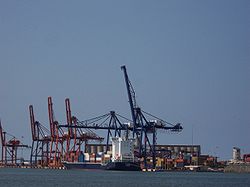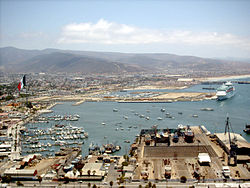




Mexico's 10 busiest freight ports by total cargo tonnage
| Port | Total Cargo (Metric Tons) - 2013 |
|---|---|
| Lazaro Cardenas | 30,781,903 |
| Manzanillo | 25,923,821 |
| Veracruz | 20,530,234 |
| Altamira | 15,333,440 |
| Isla de Cedros | 15,234,436 |
| Punta Venado | 9,064,845 |
| Guerrero Negro | 7,573,513 |
| Coatzacoalcos | 7,052,059 |
| Guaymas | 5,832,015 |